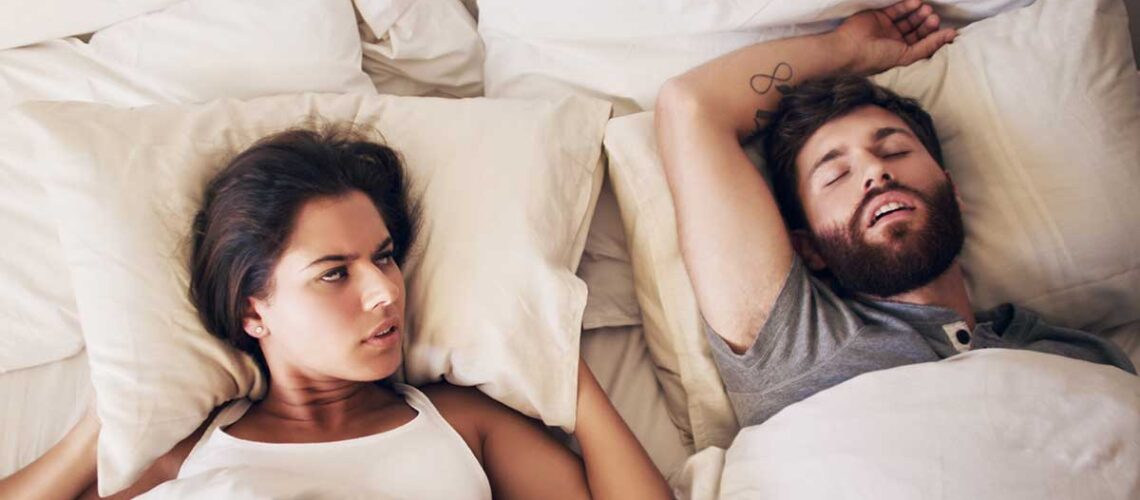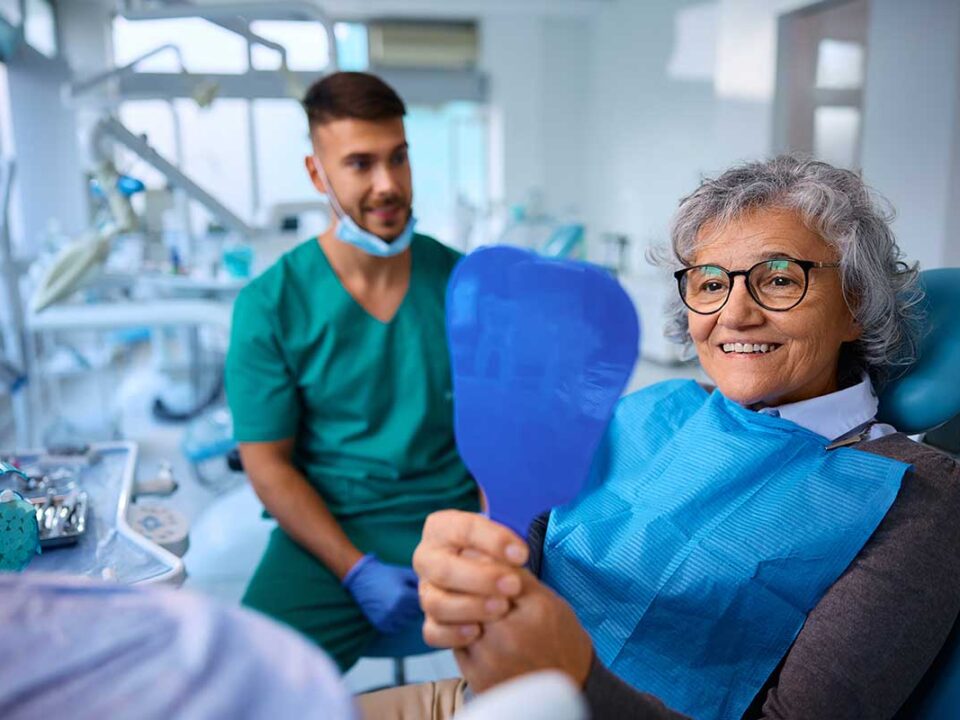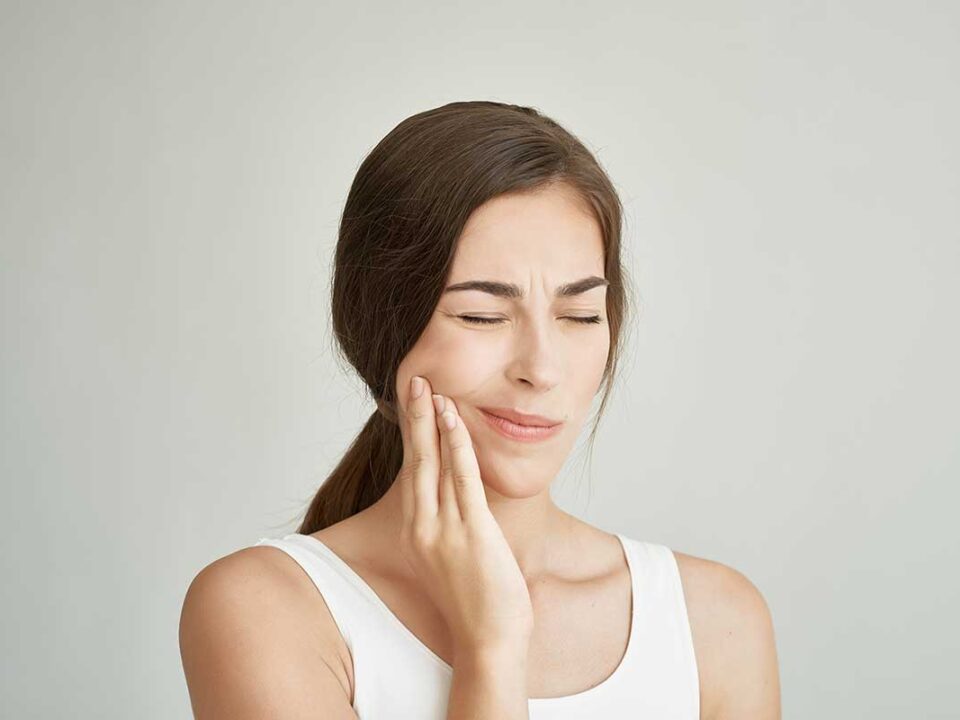Sleep apnea is more than a mere disturbance in the night; it’s a severe sleep disorder that carries significant health implications. But what is it precisely, and why should it concern you? This guide aims to provide a comprehensive understanding of sleep apnea.
Table of Contents
Sleep Apnea: A Deeper Dive
Sleep apnea is characterized by repeated interruptions in breathing during sleep. These pauses can last from a few seconds to minutes and may occur 30 times or more an hour. Following each cessation, normal breathing starts again, sometimes with a loud snort or choking sound.Types of Sleep Apnea

Obstructive Sleep Apnea (OSA)
Physical Blockage: OSA is the most common form of sleep apnea and results from a physical obstruction in the airway. During sleep, the throat muscles relax, which can cause soft tissue to collapse and block the airway. Anatomical Factors: People with a thicker neck or narrower throat might be at increased risk. Enlarged tonsils, adenoids, or other structures in the throat can also contribute to the obstruction. Excess Weight: Obesity significantly raises the risk of sleep apnea. Fat deposits around the upper airway can obstruct breathing.Central Sleep Apnea (CSA)
Brain Signal Failure: Unlike OSA, CSA isn’t caused by a physical blockage. Instead, the brain fails to transmit the appropriate signals to the muscles controlling breathing. This results in a temporary cessation of respiratory effort. Underlying Conditions: CSA can be associated with conditions like heart failure, stroke, and certain medications. It’s less common than OSA and requires different intervention strategies. Idiopathic Central Sleep Apnea: In some cases, the cause of CSA remains unknown. This subtype is termed as “idiopathic.”Complex Sleep Apnea Syndrome (Treatment-emergent Central Sleep Apnea)
Combination of Both: Some people exhibit characteristics of both OSA and CSA. This is typically seen in individuals being treated for OSA who then start to show signs of CSA. Treatment Challenges: This form can be trickier to manage, necessitating a multi-faceted treatment approach.What Causes Sleep Apnea?
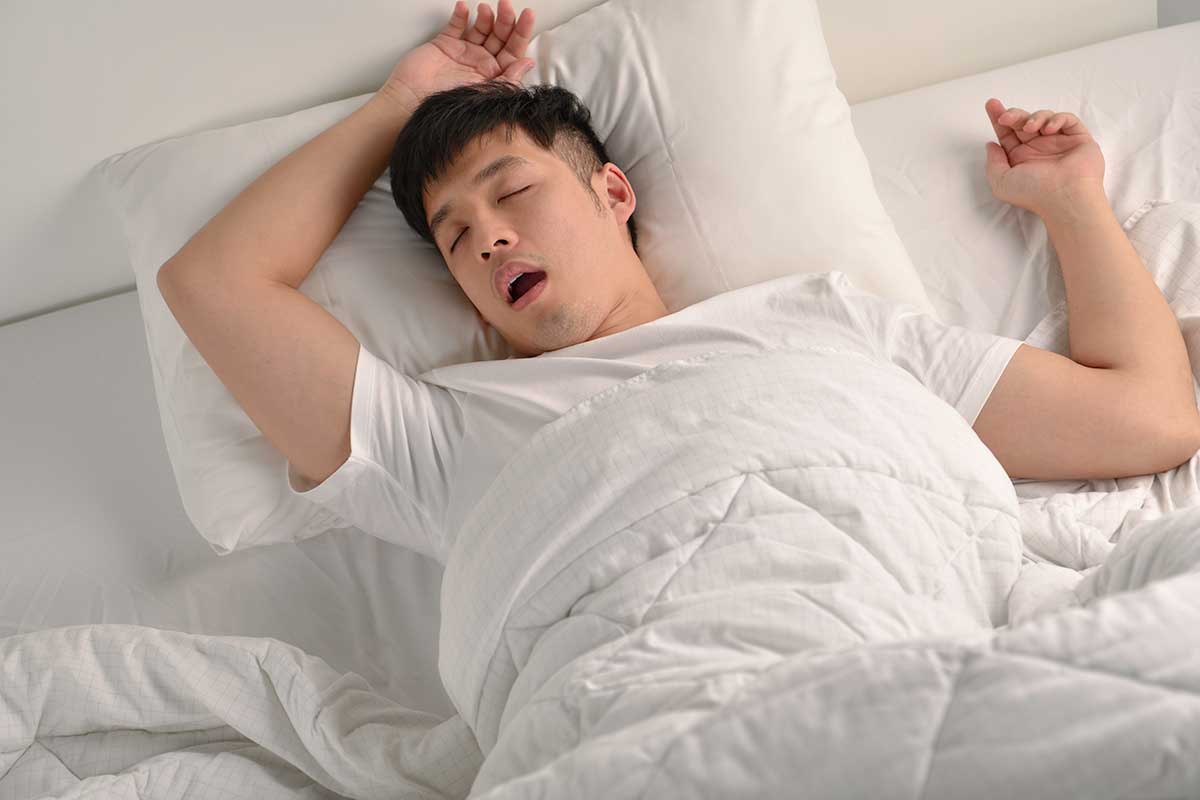 Sleep apnea has various underlying causes that are important to understand. After recognizing that there are different types of sleep apnea, each stemming from distinct origins, the next step is to analyze why sleep apnea occurs.
Sleep apnea has various underlying causes that are important to understand. After recognizing that there are different types of sleep apnea, each stemming from distinct origins, the next step is to analyze why sleep apnea occurs.
Risk factors that enhance susceptibility
Family History: Genetics can play a role. Those with a family history might have a higher chance of developing the condition. Use of Alcohol or Sedatives: These substances relax the muscles of the throat, increasing the risk of airway obstruction. Smoking: Smokers are more likely to develop sleep apnea compared to non-smokers. Smoking can increase inflammation and fluid retention in the airways. Nasal Congestion: An inability to breathe through the nose due to an anatomical issue or allergies can result in obstructive sleep apnea. Nasal congestion is a leading cause of snoring and low oxygen intake. Medical Conditions: Congestive heart failure, polycystic ovary syndrome, and hypothyroidism can increase the risk. People with a history of stroke or brain tumors might be more susceptible to central sleep apnea.Hormonal and Age-Related Factors
Menopause: Women going through menopause may have an increased risk due to hormonal changes affecting muscle tone and fat distribution. Age: Sleep apnea, especially OSA, becomes more common as people age, largely due to the loss of muscle tone in the throat region. Hormonal Disorders: Acromegaly (increased production of growth hormone) and hypothyroidism can lead to enlarged tissues, increasing the risk of obstruction.Physical Traits and Congenital Conditions
Facial Bone Structure: Certain facial configurations, like a recessed jaw, can make one more prone to airway obstructions. Neck Circumference: Individuals with a wider neck might have a narrower airway, increasing the risk. Down Syndrome: Due to their anatomical features, people with Down syndrome are at a higher risk of obstructive sleep apnea. Understanding the varied causes of sleep apnea is crucial for targeted treatment. While some causes might be inherent, others can be influenced by lifestyle choices. If you believe you might be at risk, it’s essential to seek medical guidance. Early intervention can not only improve the quality of sleep but also mitigate potential long-term health repercussions.How do I Know if I Have Sleep Apnea: Symptoms to Look Out For
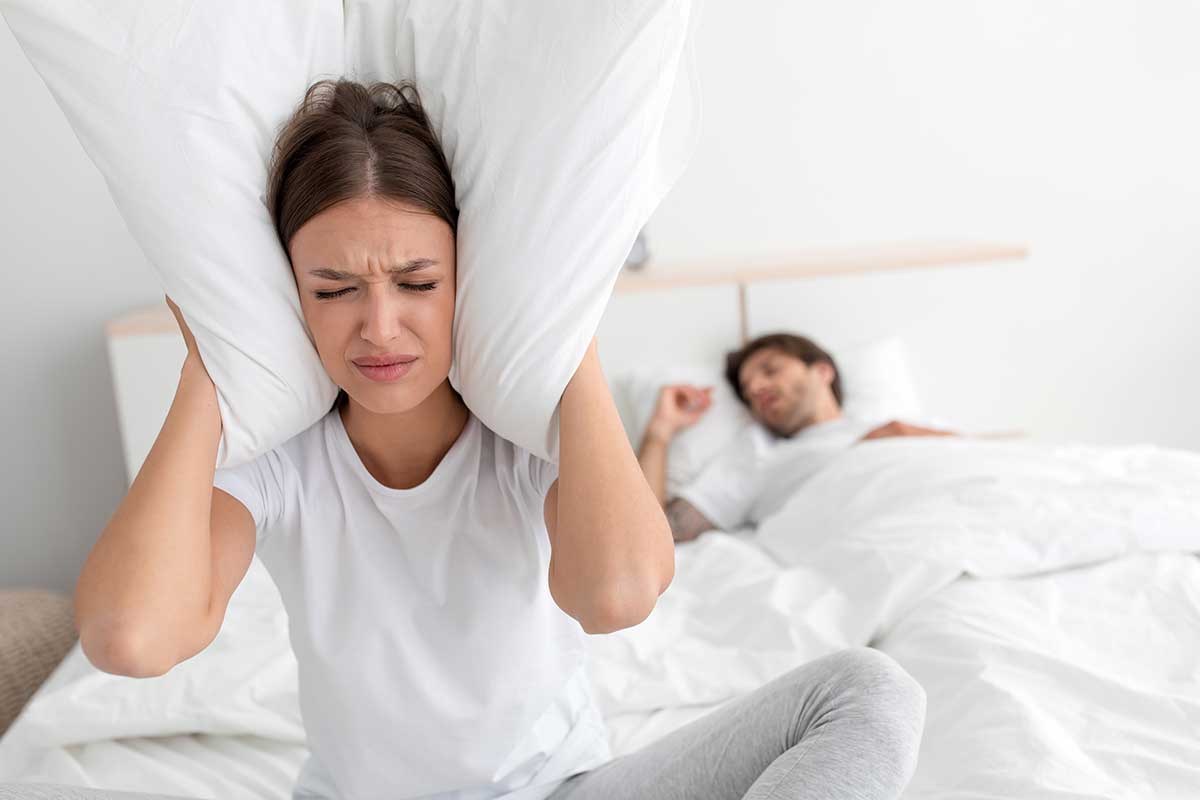 Recognizing the signs and symptoms of sleep apnea is the first step toward seeking appropriate treatment. Often, individuals with sleep apnea may not be aware of their condition, as some of the symptoms manifest during sleep. However, the repercussions of these nighttime disturbances spill over into their daytime activities.
Recognizing the signs and symptoms of sleep apnea is the first step toward seeking appropriate treatment. Often, individuals with sleep apnea may not be aware of their condition, as some of the symptoms manifest during sleep. However, the repercussions of these nighttime disturbances spill over into their daytime activities.
Loud and Chronic Snoring
Not Just Ordinary Snoring: While snoring can be a result of various factors, the snoring associated with sleep apnea tends to be notably loud and persistent. It may be punctuated with silent periods followed by gasps or choking sounds. Patterns: Pay attention to the pattern of snoring. If it’s interspersed with moments of silence (apneas) followed by sudden awakenings, it could be indicative of sleep apnea. Check our article about snoring treatments.Pauses in Breathing
Witness Accounts: Often, the affected person might not realize they have pauses in breathing, but a bed partner or someone in close proximity during sleep might observe these frightening moments of apnea. Duration: These pauses can last from a few seconds to minutes and may happen many times an hour.Frequent Awakening for Urination (Nocturia)
Nightly Disruptions: People with sleep apnea may notice that they wake up multiple times during the night to urinate. Underlying Mechanism: The frequent awakenings and changes in intra-thoracic pressure can stimulate increased urine production at night.Difficulty in Staying Asleep (Insomnia)
Restlessness: Individuals might find it challenging to stay asleep or might experience restless tossing and turning. Causes: The frequent disruptions in breathing patterns can make prolonged, restful sleep elusive.Dry Mouth or Sore Throat upon Waking
Breathing Pattern: Mouth breathing during sleep, often due to nasal obstructions, can lead to a dry mouth or a sore throat in the morning. Associated Signs: This might be accompanied by bad breath due to reduced salivary flow and bacterial growth.Morning Headaches
Reduced Oxygen: The decreased oxygen levels and disrupted sleep patterns can lead to morning headaches, which usually resolve after a few hours. Frequency: Regular occurrence of these headaches, especially in tandem with other symptoms, should raise suspicions about sleep apnea.Daytime Fatigue and Sleepiness
Sleep Deprivation: Due to the repetitive disruptions in sleep, individuals often feel fatigued, drowsy, or have difficulty staying awake during the day. Microsleeps: They might experience brief episodes of falling asleep without realizing it, especially during monotonous activities.Difficulty Concentrating
Brain Fog: Sleep deprivation impacts cognitive functions, leading to trouble focusing, forgetfulness, or a “foggy” feeling. Impact on Daily Activities: This lack of concentration can affect work performance, school activities, and even daily chores.Mood Changes
Emotional Repercussions: Chronic sleep deprivation can lead to mood swings, irritability, depression, or anxiety. Stress and Frustration: The persistent fatigue and inability to sleep restfully can add to daily stress and frustrations.Decreased Libido
Hormonal Imbalance: The physical and psychological effects of sleep apnea, combined with potential hormonal changes due to sleep deprivation, can lead to reduced sexual desire. Associated Factors: This can be exacerbated by other symptoms like mood changes or reduced energy levels. Understanding and recognizing these symptoms is essential, as undiagnosed and untreated sleep apnea can lead to a range of health complications. If you or someone you know exhibits multiple symptoms mentioned above, especially loud snoring interspersed with pauses in breathing, it’s crucial to consult a healthcare professional. Early detection can pave the way for effective management and prevent associated health risks.Treatments and Interventions for Sleep Apnea
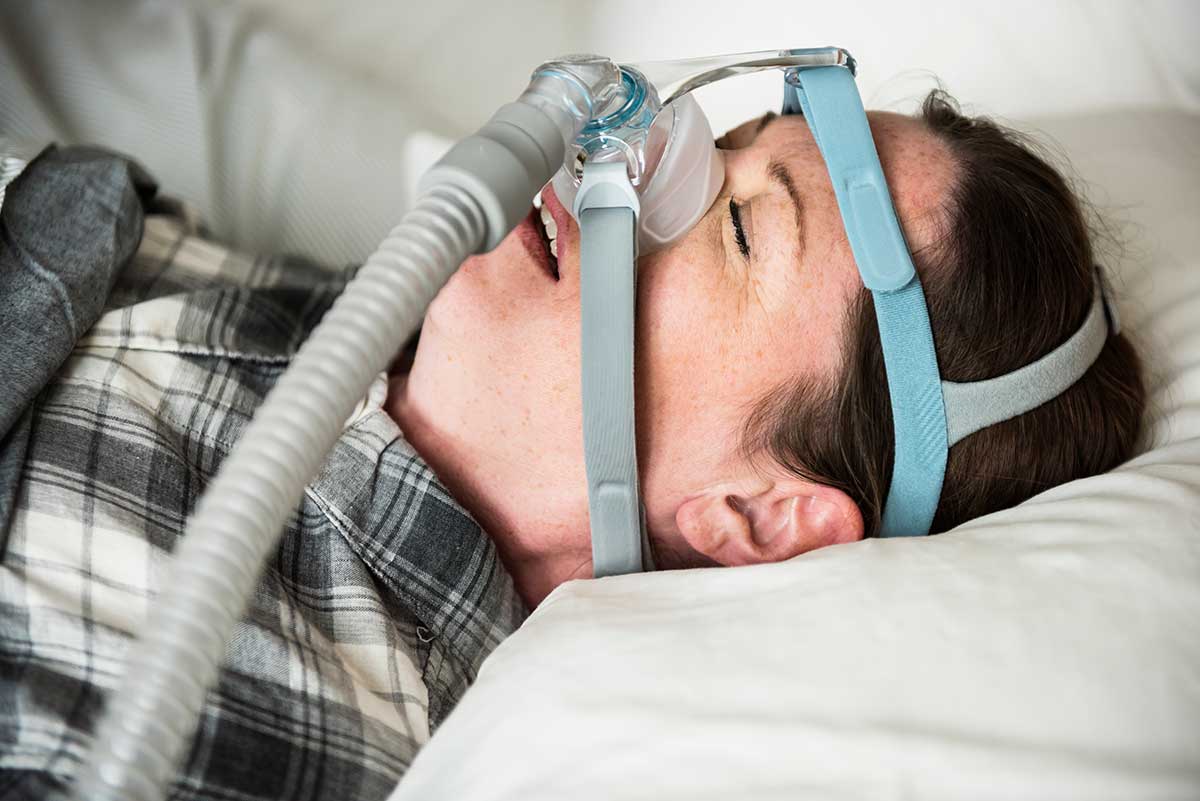
Therapeutic Approaches to treating sleep apnea
Continuous Positive Airway Pressure (CPAP): A machine delivers air pressure through a mask while you sleep. This pressure keeps the airway open. Expiratory Positive Airway Pressure (EPAP): A single-use device placed over each nostril before sleep. It acts as a valve, allowing air to flow freely in but making it harder for air to flow out. This increases pressure, keeping the airway open. Oral Appliances: Designed to keep the throat open by bringing the jaw forward, which can sometimes relieve snoring and mild OSA.Lifestyle and Home Remedies to Treat Sleep Apnea
Addressing sleep apnea doesn’t always necessitate complicated medical procedures or expensive equipment. Sometimes, simple adjustments to one’s lifestyle or incorporating specific home remedies can significantly mitigate the symptoms and improve overall sleep quality. Let’s explore these in greater depth:Lose Weight
Weight and OSA: A significant proportion of people with obstructive sleep apnea are overweight. Excess fat, especially around the neck, can exert pressure on the airway, causing it to collapse or become blocked during sleep. Beneficial Reduction: Even a modest weight loss—around 10% of body weight—can lead to noticeable reductions in sleep apnea symptoms. In some cases, achieving a healthy weight can entirely eliminate the disorder. Holistic Approach: Incorporating a balanced diet and regular exercise not only aids weight loss but also promotes better sleep patterns.Positional Therapy
Side-Sleeping: Some individuals experience sleep apnea primarily when lying on their backs. This is because gravity can cause the tongue and soft palate to fall back into the airway, causing an obstruction. By sleeping on one’s side, this risk is reduced. Support Tools: Specialty pillows and devices can help keep you positioned on your side. There are even wearable devices that vibrate when you roll onto your back, prompting you to change positions.Avoid Alcohol and Sleeping Pills
Muscle Relaxation: Both alcohol and sedatives relax the central nervous system, leading to deeper relaxation of throat muscles. This exacerbates the collapse or blockage of the airway during sleep. Timing Matters: If consumed, it’s best to limit alcohol intake to at least a few hours before bedtime to reduce its impact on sleep apnea.Quit Smoking
Inflammation and Fluid Retention: Smoking can lead to inflammation and fluid retention in the airway. Both of these can increase the risk or severity of sleep apnea. Gradual Reduction: For those finding it hard to quit all at once, even reducing the number of cigarettes smoked can lead to a decrease in sleep apnea symptoms. Consider nicotine patches, counselling, or medications to help quit.Maintain a Regular Sleep Schedule
Body Clock Sync: Keeping consistent bedtime and wake-up times can help regulate sleep patterns and optimize sleep quality. Benefits: A routine sleep schedule not only helps in managing sleep apnea but also improves alertness during the day and overall well-being.Nasal Decongestants or Allergy Medications
Unblocked Passageway: If nasal congestion makes breathing difficult, over-the-counter nasal sprays or allergy medications might help. Breathing becomes easier when the air passageway is clear. Nasal strips: A natural way to combat nasal congestion are nasal strips. These strips are sold at the pharmacy, and no prescription is necessary. Nasal strips are a great tool to help open up nasal passages and reduce congestion without medications.Elevate the Head of Your Bed
Angled Sleep: Elevating the head by about four to six inches can help reduce the airway collapsing. Use foam wedges or special pillows designed for sleep apnea. Avoid Double-Pillowing: Simply using extra pillows might not be as effective since it can lead to an awkward neck position, further obstructing the airway.Stay Hydrated
Moistened Airway: Drink ample water throughout the day. A moistened airway is less likely to produce the loud vibrations of snoring. Guidelines: The Institute of Medicine recommends about 3.7 litres (or about 13 cups) for men and 2.7 litres (about 9 cups) for women, including all beverages. Incorporating these lifestyle changes and home remedies can significantly influence the management of sleep apnea. However, always consult a healthcare professional before making significant changes, especially when considering medications. Taking a proactive approach can lead to more restful nights and energetic days.Surgical Options to Treat Sleep Apnea
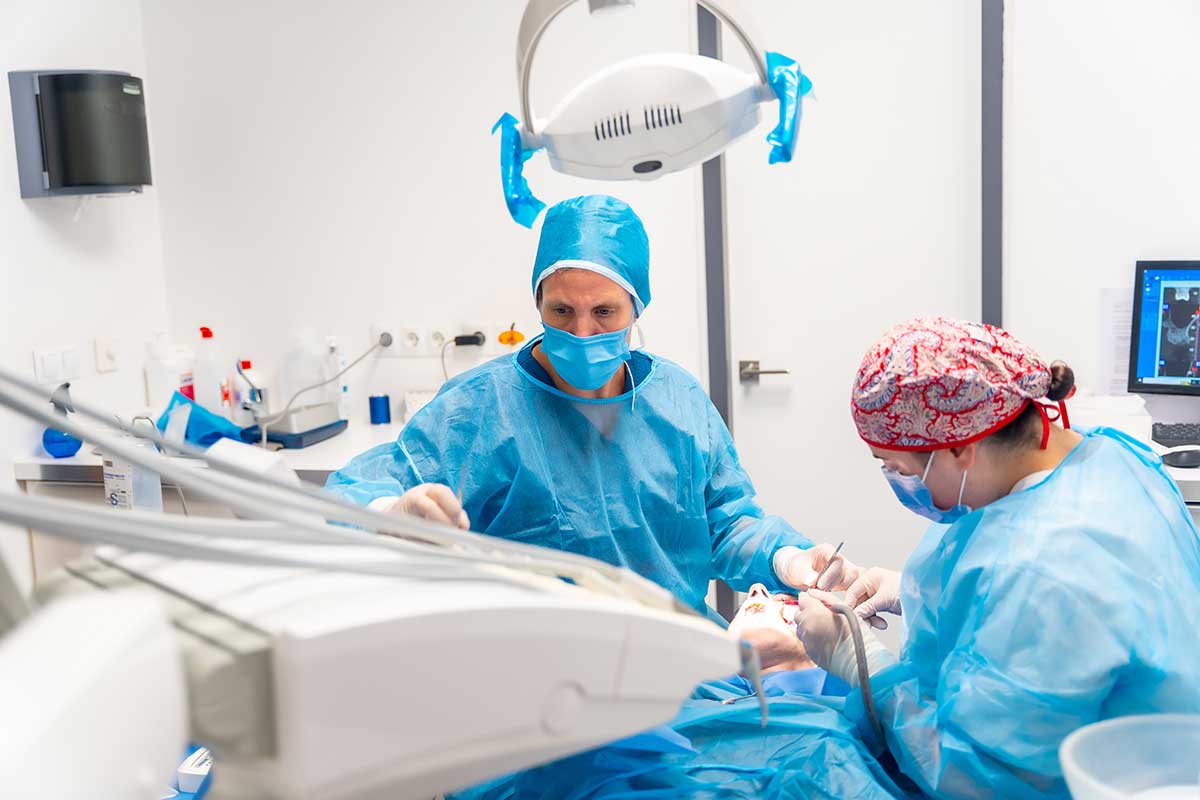 While lifestyle changes and devices like CPAP machines form the frontline defence against sleep apnea, for some individuals, surgery may become a necessity, especially when other treatments prove ineffective or unsuitable. Surgical interventions are varied and are chosen based on the specific needs of the individual and the root cause of their sleep apnea. Let’s delve deeper into these surgical procedures:
While lifestyle changes and devices like CPAP machines form the frontline defence against sleep apnea, for some individuals, surgery may become a necessity, especially when other treatments prove ineffective or unsuitable. Surgical interventions are varied and are chosen based on the specific needs of the individual and the root cause of their sleep apnea. Let’s delve deeper into these surgical procedures:
Tonsillectomy and/or Adenoidectomy
Targeting the Obstruction: Enlarged tonsils or adenoids can block the airway, especially in children, making this surgery a primary treatment for pediatric sleep apnea. Procedure: The surgery involves the removal of tonsils and/or adenoids, creating a clearer airway passage. Recovery: Post-operative pain and throat discomfort are common, but most children can resume normal activities after several days.Uvulopalatopharyngoplasty (UPPP)
Reshaping the Throat: This procedure aims to remove excess tissue from the throat, enlarging the airway. This might include the uvula, part of the soft palate, tonsils, and adenoids. Effectiveness: While UPPP can decrease the occurrence of apneas and improve snoring, it doesn’t always cure sleep apnea. It’s most effective in patients whose obstruction is localized to the areas targeted by the surgery. Recovery: Pain post-surgery can be significant, and a hospital stay might be required.Inspire Therapy
Stimulating the Airway: This relatively newer treatment involves surgically implanting a device that stimulates the hypoglossal nerve, preventing airway collapse by activating tongue muscles. Remote Control: The device can be turned on or off with a small handheld remote, allowing for ease of use and control. Candidates: This option is generally considered for those with moderate to severe OSA who cannot tolerate CPAP.Maxillomandibular Advancement (MMA)
Repositioning Jaws: This procedure involves moving the upper and lower jaw forward to enlarge the space behind the tongue and soft palate, reducing the risk of obstruction. Considerations: MMA is an intricate surgery with a longer recovery time. It’s typically reserved for patients with severe OSA, particularly when other treatments have failed. Additional Benefits: Beyond alleviating OSA symptoms, this surgery can also improve facial aesthetics and occlusion.Nasal Surgery
Treating Nasal Obstructions: For some, obstructions in the nose, like a deviated septum, can cause or exacerbate sleep apnea. Surgery can correct these issues. Types: This could involve straightening the septum (septoplasty), reducing the size of nasal turbinates, or removing polyps. Recovery: Generally, the recovery is straightforward, with patients advised to avoid strenuous activities for a few weeks.Genioglossus Advancement (GA)
Stabilizing the Tongue: GA targets the tendon of the major tongue muscle, moving it forward and preventing it from collapsing backward into the airway. Often Combined: GA is often done in conjunction with other procedures to maximize its efficacy in treating sleep apnea. Recovery: Most patients can resume regular activities within a week, although they might experience some discomfort and swelling.Tracheostomy
Direct Airway Access: This is the most definitive treatment for OSA and involves creating a direct opening in the trachea (windpipe) below the blockage, through which one breathes. When It’s Used: Due to potential complications and the significant care a tracheostomy requires, it’s typically reserved for life-threatening OSA when all other treatments have failed. Maintenance: Care of the tracheostomy site is paramount to prevent infections and other complications. It’s crucial to remember that while surgery can offer significant relief, it also carries risks. Therefore, a comprehensive evaluation by an otolaryngologist or a sleep surgeon is essential before deciding on any surgical intervention. The specific anatomy and the location of airway obstructions often determine the choice of surgery. Regular follow-ups post-surgery are also critical to ensure its success and promptly address complications.How Can a Dentist Help Treat Sleep Apnea?
The role of a dentist in managing sleep disorders might come as a surprise to many. However, dentists, especially those trained in dental sleep medicine, can play a pivotal role in diagnosing and treating certain types of sleep apnea. Here’s a closer look at how dental professionals can aid in managing this condition:Oral Appliance Therapy (OAT)

Professional Evaluation
Dental Examination: Dentists can conduct a thorough evaluation of the oral cavity, checking for any signs that might contribute to sleep apnea, such as an unusually large tongue, recessed jaw, or high palate. Patient History: Discussing sleep habits and symptoms can give the dentist clues about potential sleep apnea or other sleep disorders.Collaboration with Sleep Specialists
Referral: If a dentist suspects a patient has sleep apnea based on oral signs and symptoms, they can refer the individual to a sleep specialist for a comprehensive sleep study. Customization: Post-diagnosis, a dentist can work in tandem with the sleep specialist to create custom-fitted oral devices tailored to the patient’s anatomy and needs.Follow-up and Adjustments
Regular Monitoring: Patients using oral appliances require regular dental check-ups to ensure the device fits well and isn’t causing any unwanted side effects like jaw pain or tooth movement. Device Calibration: Over time, the device might need adjustments to ensure maximum efficacy. A trained dentist can calibrate the appliance as needed.Patient Education
Sleep Hygiene: Dentists can guide patients on best practices for good sleep hygiene, emphasizing the importance of regular sleep schedules, a conducive sleep environment, and potential dietary impacts. Awareness: Dentists can raise awareness about the implications of untreated sleep apnea and the available treatment modalities.Alternative Treatments
Maxillofacial Solutions: In severe cases where oral appliances might not be sufficient, maxillofacial surgeons can explore surgical interventions to rectify anatomical obstructions. Craniofacial Growth Guidance: For pediatric patients, dentists can employ growth guidance appliances and techniques that ensure proper growth of jaws and prevent sleep apnea in adulthood.Benefits Over CPAP
Comfort: Many patients find dental devices more comfortable than CPAP (Continuous Positive Airway Pressure) machines. Portability: Dental devices are compact and don’t require a power source, making them travel-friendly. Ease of Use: Unlike CPAP machines, dental devices are simple to wear and don’t have the added hassle of masks or hoses. A dentist’s involvement in sleep apnea treatment showcases the multidisciplinary nature of healthcare. While severe cases of sleep apnea might necessitate more advanced interventions, dental solutions offer a viable, comfortable, and effective treatment option for many individuals.What is the Role of the Oral Surgeon in Treating Sleep Apnea?
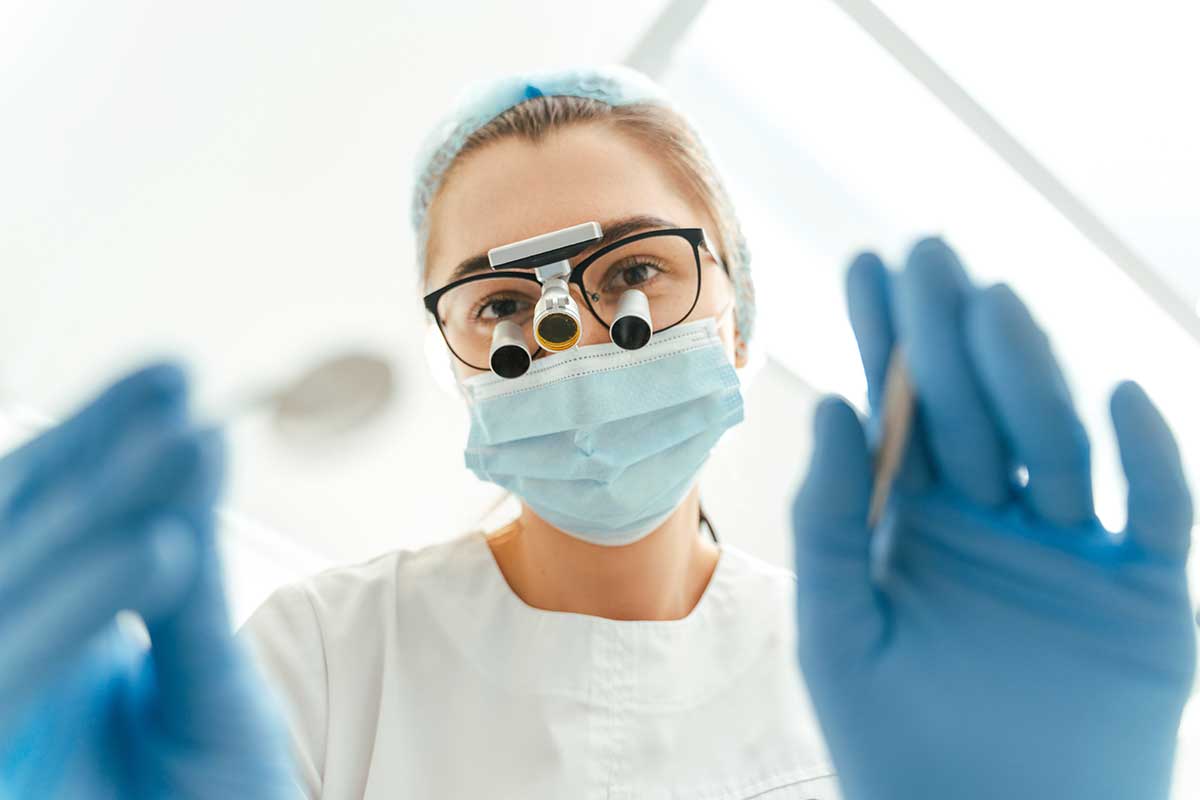 Oral and maxillofacial surgeons play a pivotal role in the multidisciplinary approach to treating sleep apnea. While continuous positive airway pressure (CPAP) therapy remains a common treatment, surgical options can be beneficial for specific patients, especially those who can’t tolerate CPAP or find it ineffective. That’s where an oral surgeon will come in to address the issue.
Oral and maxillofacial surgeons play a pivotal role in the multidisciplinary approach to treating sleep apnea. While continuous positive airway pressure (CPAP) therapy remains a common treatment, surgical options can be beneficial for specific patients, especially those who can’t tolerate CPAP or find it ineffective. That’s where an oral surgeon will come in to address the issue.
Uvulopalatopharyngoplasty (UPPP)
This is a common surgical procedure where excess tissue from the throat is removed, enlarging the airway. This might include the uvula, parts of the soft palate, and sometimes the tonsils and adenoids.Genioglossus Advancement (GA)
The genioglossus muscle attaches to the inside front part of the jawbone and is responsible for tongue movement. GA involves moving the attachment point of this muscle forward, preventing the tongue from collapsing backward and obstructing the airway during sleep.Maxillomandibular Advancement (MMA)
This surgical procedure involves moving the upper and lower jaws forward. By doing this, the space behind the tongue and the soft palate is increased, reducing the risk of obstruction.Tongue Reduction Surgery
For those with an abnormally large tongue that can block the airway, a partial tongue reduction can help. Surgeons remove a part of the tongue to prevent it from falling back into the throat.Hyoid Suspension
The hyoid is a bone located above the Adam’s apple. This procedure involves securing the hyoid bone to the thyroid cartilage to stabilize the area and reduce airway collapse.Laser-Assisted Uvulopalatoplasty (LAUP)
With the help of a laser, parts of the uvula and the palate are vaporized, helping to reduce snoring and mild cases of sleep apnea.Skeletal Surgery
In cases where skeletal deformities contribute to sleep apnea, oral surgeons might recommend corrective surgery. This might involve repositioning the jaws or other skeletal elements to ensure a clear airway.Nasal Surgery
While not an oral surgery per se, correcting nasal obstructions like a deviated septum can assist in treating sleep apnea. Such surgeries might be combined with procedures performed by oral surgeons for comprehensive treatment.Post-operative Care and Monitoring
Beyond the surgeries themselves, oral surgeons often engage in post-operative care. They’ll monitor healing, address complications, if any, and work alongside sleep medicine specialists to ensure the efficacy of the surgical intervention.Customizing Treatment Plans
Every patient is unique, and what works for one might not work for another. Oral surgeons, alongside a team of medical professionals, assess individual cases, review medical histories, and employ imaging techniques to tailor the best treatment strategy. It’s important to understand that surgery is usually considered after other treatments have been tried or when the anatomical structure significantly contributes to sleep apnea.What Happens if Sleep Apnea is Left Untreated?
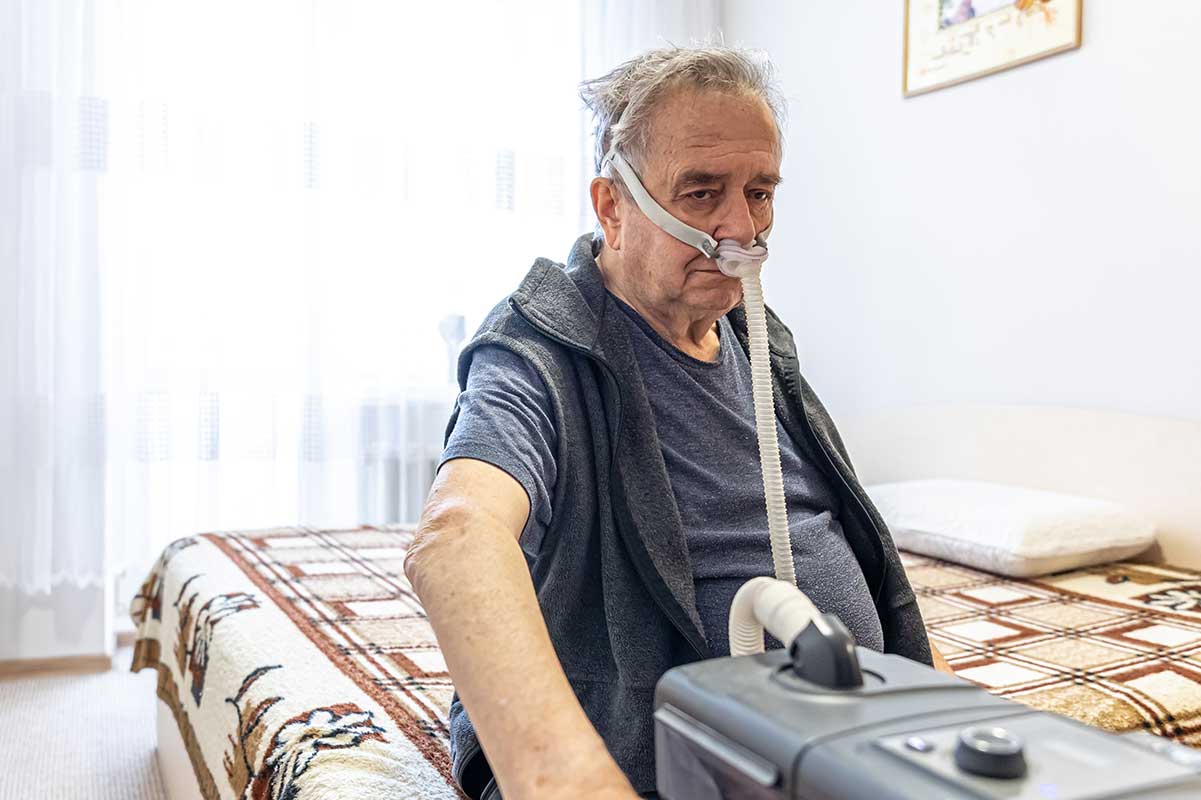 Untreated sleep apnea doesn’t just disrupt one’s night—it can cast a shadow over the entire day and even pose long-term health risks. When breathing is compromised, so is oxygen delivery to vital organs, leading to a plethora of complications.
Untreated sleep apnea doesn’t just disrupt one’s night—it can cast a shadow over the entire day and even pose long-term health risks. When breathing is compromised, so is oxygen delivery to vital organs, leading to a plethora of complications.
Cardiovascular Complications
Blood Pressure Surge: The recurring episodes of reduced oxygen can lead to elevated blood pressure. Every time someone with sleep apnea wakes up during the night, a hormonal spike occurs, leading to a rise in blood pressure. Over time, this can lead to persistent hypertension even during the daytime. Heart Disease: Those with OSA are at a higher risk of heart attack, owing to the stress and strain on the cardiovascular system. The low oxygen levels caused by the cessation of breathing strain the heart, making heart attack and atrial fibrillation more likely. Stroke: The obstructed airways associated with OSA increase the likelihood of stroke, one of the leading causes of death and long-term disability.Complications with Medications & Surgeries
Anesthesia Sensitivity: People with sleep apnea, especially OSA, might be more susceptible to complications when sedated and lying on their backs—such as during surgical procedures. Sedation can further relax the throat muscles and worsen OSA. Post-surgery Complications: Due to the interrupted breathing patterns and potential for reduced oxygen intake, there’s an increased risk for postoperative complications. This is particularly concerning after major surgeries, which may require strong pain medications post-operatively—these can further depress breathing.Liver Function Abnormalities
Non-alcoholic Fatty Liver Disease (NAFLD): People with sleep apnea often show evidence of NAFLD, a condition where fat deposits in the liver, potentially leading to scarring (cirrhosis) and liver damage. Studies have suggested a link between OSA and liver damage in those with NAFLD. Elevated Liver Enzymes: Liver enzymes are often higher in people with sleep apnea, indicating liver inflammation.Sleep-Deprived Partners
Disrupted Partner Sleep: Loud, recurrent snoring, a hallmark symptom of sleep apnea, can keep partners awake, affecting their sleep quality and overall health over time. Strained Relationships: Beyond just the physical toll, the resultant tiredness and irritability can strain personal relationships. Partners might find themselves feeling frustrated or resentful due to repeated disruptions.Metabolic Syndrome
Symptoms Correlation: This comprises a cluster of conditions, including high blood pressure, abnormal cholesterol levels, high blood sugar, and an increased waist circumference. Sleep apnea can increase the risk of metabolic syndrome, further elevating the chances of heart disease, diabetes, and stroke.Type 2 Diabetes
Increased Risk: There’s a noted association between insulin resistance and sleep apnea. Many people with OSA are either already diabetic or are at an increased risk of developing type 2 diabetes.Mental Health Concerns
Depression and Anxiety: Studies have shown that a lack of restorative sleep can negatively impact mood and mental well-being. There’s evidence to suggest that people with sleep apnea have a higher propensity for depression. Anxiety and mood swings are also more common in those with untreated sleep apnea. Cognitive Impairments: Chronic sleep disruption can lead to difficulty concentrating, memory issues, and a reduced ability to think clearly or make decisions. By comprehending the far-reaching implications of untreated sleep apnea, the urgency for early diagnosis and appropriate management becomes even more evident. Remember, timely intervention can not only alleviate symptoms but potentially avert life-threatening complications.Conclusion
Sleep apnea is not merely a minor annoyance; it’s a severe medical condition with wide-ranging implications. Recognizing its symptoms, understanding its causes, and seeking timely and appropriate treatment can be life-saving. Ensuring proper knowledge and awareness is the first step toward healthier nights and brighter days.
Sleep Apnea FAQ
Find answers to the most commonly asked questions about sleep apnea, its associated side effects and the preferred treatment options. Brushing up on your knowledge about this condition, and what you can expect if you’ve been diagnosed with sleep apnea is highly recommended. Please visit our services page for additional information about our sleep apnea treatments, or contact our dental office. We’re always ready to help.
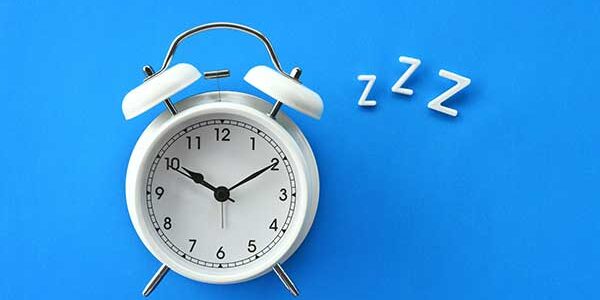
Sleep Apnea FAQ

Find answers to the most commonly asked questions about sleep apnea, its associated side effects and the preferred treatment options. Brushing up on your knowledge about this condition and what you can expect if you’ve been diagnosed with sleep apnea is highly recommended. Please visit our services page for additional information about our sleep apnea treatments, or contact our dental office. We’re always ready to help.
Yes, children can have sleep apnea. In kids, it’s often caused by enlarged tonsils and adenoids blocking the airway. Symptoms in children might include snoring, restless sleep, bedwetting, growth issues, behavioral problems, and poor performance in school.
While snoring can be a significant indicator of sleep apnea, not everyone who snores has the condition. However, individuals who experience loud, chronic snoring, especially accompanied by periods of silence followed by gasps, should seek a medical evaluation.
Some preventive measures include maintaining a healthy weight, avoiding excessive alcohol and sedative use, quitting smoking, treating allergies that cause nasal blockages, and sleeping on your side.
Yes, untreated sleep apnea can lead to several complications, including cardiovascular problems, daytime fatigue, high blood pressure, type 2 diabetes, metabolic syndrome, complications with medications and surgery, and liver problems.
Sleep apnea is a prevalent condition. It’s estimated that millions worldwide suffer from it, but many remain undiagnosed. In the U.S alone, over 18 million adults are believed to have sleep apnea.
Yes, men are more likely to develop sleep apnea than women. However, the risk for women increases if they’re overweight, and it also appears to rise after menopause.
Yes, sleep deprivation caused by sleep apnea can lead to hormonal imbalances that increase appetite, leading to weight gain. This can, in turn, exacerbate sleep apnea, creating a vicious cycle.
Sleep apnea can lead to various cardiovascular issues. The sudden drops in blood oxygen levels that occur can increase blood pressure and strain the cardiovascular system, elevating the risk of heart attack, stroke, and arrhythmias.
Dentists trained in dental sleep medicine can design and provide oral appliances (like Mandibular Advancement Devices) that help open the airway by positioning the jaw or tongue forward.
During routine dental check-ups, dentists might notice signs like tooth grinding (bruxism), a scalloped tongue, or dental wear and tear, which could suggest sleep apnea. Additionally, discussing sleep habits and quality might give dentists clues about the disorder.
Dental devices are generally considered more suitable for mild to moderate Obstructive Sleep Apnea. Many patients prefer them because they’re less obtrusive than CPAP machines. However, CPAP remains the gold standard for severe cases.
Some users may experience jaw discomfort, tooth movement, dry lips, or excessive salivation initially. Regular visits to the dentist can help in adjusting the device and addressing these concerns.
With proper care, most dental devices can last several years. However, regular check-ups are essential to ensure they’re functioning effectively and comfortably.
No, not all dentists treat sleep apnea. Those interested should seek dentists with specific training in dental sleep medicine or who advertise as “sleep dentists.”
Many health insurance plans do cover oral appliances for sleep apnea, but coverage varies. It’s always best to check with your insurance provider and dentist about costs and reimbursement.
After a diagnosis of sleep apnea, the dentist takes dental impressions and bite registrations to create a custom-fitted device. The patient will have follow-up appointments to ensure the fit is perfect and make necessary adjustments.
Check us out on Facebook and Twitter for daily information about Oral Health from Martindale Dental, or visit our offices in Cambridge, Hamilton, and St. Catharines.
Have more questions?
Please contact us for all inquiries or to book an appointment with one of our convenient clinic locations. We look forward to hearing from you.

